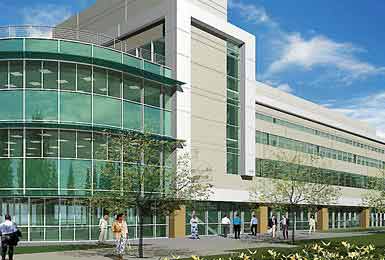Markets Tighten in U.S. Life Science Sector
Winter 2012

This significant level of investment is having a mixed impact on the market for life science and biotech space, especially in the research and development sector. Though market activity is picking up in most life science clusters throughout the United States, speculative construction of R&D facilities continues to be rare in nearly all clusters, demonstrating market awareness of constricted demand, according to Jones Lang LaSalle.
One well established life science cluster where spec construction activity is taking place is in the neighboring San Francisco Bay eastern shore communities of Emeryville and Berkeley. In Emeryville, life science developer Wareham Development is currently putting the finishing touches on its 99,000-square-foot Greenway project, a $65 million LEED Gold pre-certified R&D lab development. The project is the first spec lab facility to be built in the area since Wareham completed the 245,000-square-foot EmeryStation East in 2007.
The life science real estate market on the eastern shore has close to a zero percent vacancy, and throughout the San Francisco Bay area, the availability of space is tight. This is partly due to demand and partly to the fact that several large-scale properties previously used by biotech firms have been taken over by technology companies such as Salesforce, VMWare, and Google.
Nevertheless, demand for life science lab facilities in the East Bay is solid. Ongoing work into a variety of life science-related technologies, such as stem cell research and the development of more efficient biofuels coming out of the nearby University of California at Berkeley, is prompting much of this demand. Another potential impetus for life science industry expansion in the immediate area is Lawrence Berkeley National Laboratories' search for a second campus within 20 to 25 minutes of its existing facility in the Berkeley Hills.
While areas such as the San Francisco Bay, Boston, and Seattle continue to top the U.S. list as established markets for life science industry expansion, Los Angeles and the Washington, D.C., region are now also considered established clusters. Los Angeles' vast number of hospitals, universities, and research facilities and its large college-educated population should help propel its growing biotechnology sector to complement its mature medical device presence. Washington, D.C./suburban Maryland's close ties with government agencies and world-renowned academic research centers have supported a wave of early start-ups that have given way to mid-stage companies ripe for acquisition by major pharmaceutical companies. Rounding out the top-seven established clusters are Philadelphia and San Diego. Other U.S. cities emerging as key players in this sector include Minneapolis, Chicago, Denver, Houston, Florida, Atlanta, and Indianapolis.
Project Announcements
Amgen Expands New Albany, Ohio, Manufacturing Operations
04/28/2025
Integer Expands Salem, Virginia, Manufacturing Operations
04/19/2025
Luna Labs USA Expands Charlottesville, Virginia, Operations
03/25/2025
Sun Pharmaceuticals Plans Princeton, New Jersey, Headquarters
03/18/2025
Green Heath Laboratories Plans Foley, Alabama, Testing Operations
02/04/2025
Haleon Upgrades Richmond, Virginia, R&D Operations
01/28/2025
Most Read
-
Run a Job Task Analysis
Q4 2024
-
39th Annual Corporate & 21st Annual Consultants Surveys: What Business Leaders and Consultants Are Saying About Site Selection
Q1 2025
-
The Location Economics of Advanced Nuclear
Q1 2025
-
Why Workforce Readiness Can’t Wait
Q1 2025
-
Power, Policy, and Site Selection in 2025
Q1 2025
-
Is It Time to Start Planning for Quantum Data Centers?
Q1 2025
-
Top States for Doing Business in 2024: A Continued Legacy of Excellence
Q3 2024